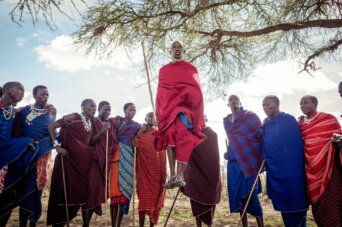- About
- Topics
- Picks
- Audio
- Story
- In-Depth
- Opinion
- News
- Donate
- Signup for our newsletterOur Editors' Best Picks.Send
Read, Debate: Engage.
| topic: | Indigenous people |
|---|---|
| located: | Tanzania |
| editor: | Bob Koigi |
The recent bloody skirmishes in the Ngorongoro area of Tanzania, a conservation haven and tourist-attraction site, has sparked global fury while also spotlighting the delicate balance between environmental conservation and the respect of indigenous peoples’ rights and economic activities.
The spate of violence was ignited by the Tanzanian government’s plan to relocate over 80,000 pastoralists who live around the world-heritage site in order to create a game reserve for trophy hunting. The government argues that the wildlife population had dropped significantly as human activity, including overgrazing, has exacerbated an already dire situation.
Footage shared on social media depicts the gravity of the situation, with police involved in lengthy battles with the pastoralists, scores of whom have been injured. Many have argued that this goes contrary to a 2018 injunction issued by the East African Court of Justice that stopped the government from harassing or evicting those living in the area.
The occurrence has also elicited debate over the worrying cases of fortress conservation in Africa, by which authorities lock forests, conservancies and land from any human activity, sometimes performing evictions, which affect local communities that have laid claim to such resources over decades. This, despite the body of research pointing to the pivotal role that indigenous communities play in protection of biodiversity.
With the dramatic toll that the climate crisis is taking on the environment, wildlife and human activities, there has been increased interest to protect biomes and indigenous groups to conserve these resources, as in the case of Ngorongoro
While there is no one unique solution to dealing with such complex situations, governments, private sector-players and development partners should work together in coming up with sustainable solutions that are attuned to the situation of climate change in easing the pressure on forests and land.
But most importantly, the rights of indigenous people should be included in any activities involving land or resources surrounding them. Giving them a central position in decision making in such weighty matters should be every government’s top priority.
Photo by Ramon Sanchez Orense

